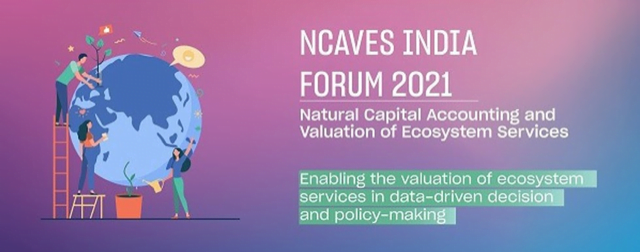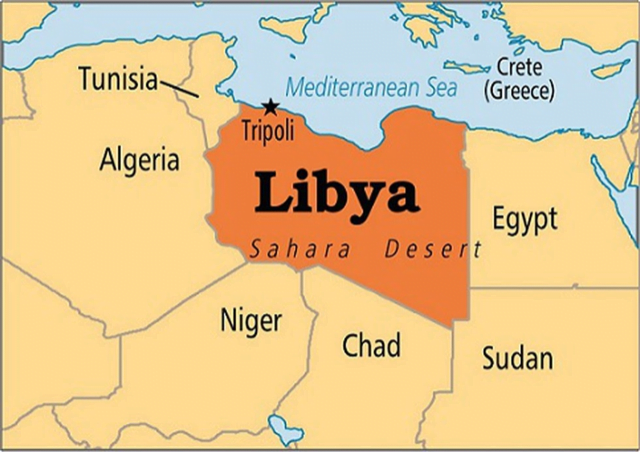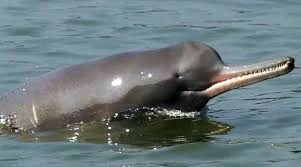IASbaba's Daily Current Affairs Analysis
Archives
(PRELIMS + MAINS FOCUS)
G Kishan Reddy Committee formed
Part of: GS Prelims and GS-II – Policies and Intervention
In news
- The Central Government has decided to form a committee to protect the language, culture and land of Ladakh and ensure citizen’s participation in the Union Territory’s development.
Key takeaways
- The Committee will be headed by the Minister of State for Home G Kishan Reddy.
- It will include elected representatives from Ladakh, Ladakh Autonomous Hill Development Council, central government, and the Ladakh administration.
- The decision to form the Committee was taken after meeting a 10-member delegation from Ladakh who expressed their views about the need to protect Ladakh’s unique cultural identity.
NCAVES India Forum 2021 organised
Part of: GS Prelims and GS-III – Environment; Ecology; Economy
In news
- Natural Capital Accounting and Valuation of the Ecosystem Services (NCAVES) India Forum-2021 is being organised.
- Ministry: Ministry of Statistics and Programme Implementation (MoSPI).

Key takeaways
- The NCAVES Project is funded by the EU.
- Jointly implemented by: United Nations Statistics Division (UNSD), the United Nations Environment Programme (UNEP) and the Secretariat of the Convention of Biological Diversity (CBD).
- In India, it is being implemented by: Ministry of Statistics and Programme Implementation in close collaboration with the Ministry of Environment, Forest and Climate Change (MoEF&CC) and the National Remote Sensing Centre (NRSC).
- India is one of the five countries taking part in this project.
- The other countries being Brazil, China, South Africa and Mexico.
- The participation in the project has helped MoSPI commence the compilation of the Environment Accounts as per the UN-SEEA framework and release environmental accounts in its publication “EnviStats India” on an annual basis since 2018.
- Under the NCAVES Project, the India-EVL Tool has been developed.
- This is a look-up tool giving a snapshot of the values of various ecosystem services in the different States of the country, based on about 80 studies conducted across the country.
‘Mera Gaon Mera Gaurav’ drive
Part of: GS Prelims and GS-III –Economy
In news
- Under the ICAR’s initiative ‘Mera Gaon Mera Gaurav’, Cleanliness drive was carried out recently in Ibrampur, Veling and Parra villages in Goa.
Important value additions
- “Mera Gaon Mera Gaurav” was launched in 2015.
- It is the flagship programme of the Prime Minister of India.
- Objective: To provide farmers with required information, knowledge and advisories on regular basis by adopting villages.
- Aim: To promote the direct interface of scientists with the farmers to hasten the lab to land process.
- Implemented by: Indian Council of Agricultural Research (ICAR), an autonomous body responsible for coordinating agricultural education and research in India.
- It reports to the Department of Agricultural Research and Education, Ministry of Agriculture.
India to chair three-key subsidiary bodies of the UNSC
Part of: GS Prelims and GS-II – International relations
In news
- India will be chairing three-key subsidiary bodies of the United Nations Security Council (UNSC).

Key takeaways
- The panels are: Counter-Terrorism Committee, Taliban Sanctions Committee, and Libya Sanctions committee.
- Chairing of Counter-Terrorism committee has a special resonance for India which has not only been at the forefront of fighting terrorism especially cross border terrorism but has also been one of its biggest victims.
- Taliban Sanctions Committee has always been a high priority for India keeping in mind its strong interest and commitment to peace, security, development, and progress of Afghanistan.
- India will be assuming the chair of the Libya Sanctions Committee at a critical juncture when there is an international focus on Libya and on the peace process.
SC’s order on Prevention Of Cruelty To Animals (Care And Maintenance Of Case Property Animals) Rules, 2017
Part of: GS Prelims and GS-II – Judiciary
In news
- The Supreme Court has asked the Centre to delete its three-year-old law.
- The law under question is the Prevention of Cruelty to Animals (Care and Maintenance of Case Property Animals) Rules, 2017 notified on May 23, 2017.
- The rules were framed under the Prevention of Cruelty to Animals Act, 1960.
- It allowed seizure and subsequent confiscation of livestock from people who depended on these animals for a livelihood, even before they were found guilty of cruelty towards them.
Key takeaways
- The SC warned the government that it would “stay” the implementation of a 2017 law, which allowed authorities to seize cattle on a mere suspicion that they suffered cruel treatment at the hands of their owners or were being primed for slaughter.
- According to the law, these animals would then be lodged in gaushalas as case property to await the court’s verdict.
- Thus, a farmer, a livestock owner or a cattle trader loses his animals before being found guilty of the charge of cruelty.
- SC ruled that these rules are contrary to Section 29 of Prevention of Cruelty to Animals Act, under which only a person convicted of cruelty can lose his animal.
Do you know?
- The 2017 Rules allow a Magistrate to forfeit the cattle of an owner facing trial under the Prevention of Cruelty to Animals Act.
- The animals are then sent to infirmaries, gaushalas, pinjarapole, etc.
- These authorities can further give such animals for “adoption”.
Centre Merges J&K Cadre Officers With AGMUT
Part of: GS Prelims and GS-II – Policies and Interventions
In news
- Recently, the Centre has merged J&K cadre for all India Services – IAS, IPS and IFoS officers – with that of Arunachal Pradesh, Goa, Mizoram and Union Territory (AGMUT), also called the Union Territory cadre, through an ordinance.
Key takeaways
- The President has promulgated an ordinance to amend J&K Reorganisation Act, 2019 and make IAS, IPS and Indian Forest Service officers of existing cadre of J&K a part of AGMUT cadre.
- The move will allow officers posted in these states and UTs to work in J&K and vice versa.
- It will also help tackle the shortage of All India Services Officers in J&K owing to an earlier rule fixing the ratio of direct recruits in Civil Services to promotees from J&K State Civil Services (Kashmir Administrative Service) at 50:50 instead of 67:33 formula followed in other states.
Related articles:
- MARCOS being deployed in the Eastern Ladakh: Click here
- DAY-NRLM Special Package for J&K and Ladakh: Click here
Gangetic River Dolphin
Part of: GS Prelims and GS-II – Policies and Interventions
In news
- A video of a group of men and boys in Uttar Pradesh’s Pratapgarh district beating to death a Gangetic river dolphin surfaced on social media recently.
- An endangered species, the Gangetic River Dolphin is recognised as the National Aquatic Animal of India.
Important value additions
Gangetic Dolphin
- Scientific Name: Platanista gangetica
- These are generally blind.
- They catch their prey by emitting an ultrasonic sound which reaches the prey.
- These are also called Susu.
- It is found mainly in the Indian subcontinent, particularly in Ganga-Brahmaputra-Meghna and Karnaphuli-Sangu river systems and in the Ganga’s tributaries.
- Threats: Construction of dams, Pollution, excessive silting and sand mining.
- It has been recognized by the Indian Government as its National Aquatic Animal
- It is the official animal of the Guwahati, Assam.
- IUCN Status: Endangered
Do you know?
- They are included in Appendix I (most endangered) of the Convention on International Trade in Endangered Species (CITES).
- They are also included in Appendix II of the Convention on Migratory Species (CMS).
- The National Mission for Clean Ganga celebrates 5th October as National Ganga River Dolphin Day.

Related articles:
- Project Dolphin announced: Click here
- Project Lion and Project Dolphin: Click here
(Mains Focus)
ECONOMY/ GOVERNANCE/ INTERNATIONAL
Topic: General Studies 2:
- Government policies and interventions for development in various sectors and issues arising out of their design and implementation.
- Indian Economy and issues relating to planning, mobilization, of resources, growth, development and employment.
Electric vehicles: A Case Study of Norway
Context: In 2020, Norway further cemented its position as a world leader in renewable technologies, as battery electric vehicles (BEVs) made up more than half of all vehicles sold in the country during the year
Statistics of auto market in Norway
- In 2020, the market share of battery electric vehicles (BEVs) rose to 54%, up from 42% in 2019.
- Only a decade ago, BEVs made up just 1 per cent of the overall market.
- If hybrid vehicles are included, the share of electric vehicles sold in 2020 is 83 per cent.
- Petrol and diesel cars sold, which commanded a 71 per cent market share in 2015, are now at 17 per cent.
- There are 2.8m vehicles on Norway’s roads and more than 260,000 are fully electric, nearly 9% of the total car stock.
How Norway became an electric vehicles pioneer?
- Contradiction: Norway, which is the biggest producer of crude oil in Western Europe, has in the recent past made a shift from fossil fuels to renewable energy.
- Early Start in 1990s itself: A country roughly the size of Maharashtra in terms of area, it began the electric push in the 1990s in an effort to cut pollution, congestion, and noise in urban centres.
- Ambitious Target: In 2017, Norway’s parliament set a non-binding goal to ensure that all cars sold should be zero emissions by 2025. The UK and Germany plan to do this by 2030, and France by 2040. In India, the government has set a target of 30 per cent vehicles becoming EV by 2030
- Reduced taxes: Norway has some of the highest taxes in the world on what it regards as luxury goods, which includes cars. So reduced taxes on electric vehicles, with numerous incentives, is bound to entice car buyers.
- Incentives: The government lets electric cars run on bus lanes, while toll roads are free for them. Also, Parking lots offer a free charge for electric vehicles.
- Charging Infrastructure: New charging stations are continuously being built on the nation’s highways — a mix of regular charging stations and fast-chargers. At the moment, Norway has 10,000 publicly available charging points.
- Policy Tweaks: The country’s policies have also encouraged carmakers to use Norway as a testing ground. As per the CNN report, Volkswagen’s luxury brand Audi was the market leader in 2020, selling 9,227 units of its e-tron model, followed by Tesla’s Model 3, which sold 7,77o units.
- Blessed with Natural resource: While Norway is still one of the world’s big oil producers, it gets more than 90% of its power from hydroelectric sources. This goes some way to explain why the introduction of electric vehicles has been such a winner: as long as the rivers and waterfalls don’t run dry, this is an infinite source of power that can also be applied to vehicles.
Challenges Ahead
- Dependence on Imports: The country does not manufacture cars (with the exception of a Norwegian city electric car called Buddy produced by a homegrown firm Buddy Electric) and pretty much all of its vehicle fleet is imported.
- Climate Footprint: Although BEVs are environmentally friendly in a local context, globally they still leave big climate footprint. The manufacture of BEV batteries requires expensive and rare metals, while the secure disposal of used and broken batteries is a problem.
- Burden on Developing Countries: Concerns of disposal of used & broken batteries are conveniently palmed off on poor, vulnerable countries – such as the Democratic Republic of Congo, which produces 60% of the world’s Cobalt – that lack the legislation to deal with them.
- Difficult to Replicate: Norway’s policies are difficult to replicate in other parts of the world, mainly because the country can offer generous subsidies thanks to its revenues from oil and gas production. Thanks to its hydrocarbon wealth, Norway has been able to build the world’s largest sovereign wealth fund, currently valued at $1.3 trillion.
ECONOMY/ GOVERNANCE
Topic: General Studies 2:
- Government policies and interventions for development in various sectors and issues arising out of their design and implementation.
- Inclusive growth and issues arising from it.
Small farmers need second source of income
Issues
- Majority of Farmers are marginal: 70% of India’s farmers have small and marginal land holdings, operating below one hectare.
- Unrewarding livelihood: On an average, smaller holdings lose money as their household costs are higher than their earnings. According to the National Sample Survey Office (NSSO), the average income of farmers owning up to two hectares is Rs 5,240 a month
- Subsistence Farming: The smallest farms are afloat since they don’t pay for labour, relying entirely on the family, and they consume much of what is produced.
- Irregular Income: Farming is a seasonal affair, not a full-time job
Farm to factory is the need of the hour
- Encouraging Industrial Investment: Industrial investment should be encouraged in rural and backward areas by offering special incentives. This can ensure an additional income to minimise the dependency on the sole agriculture-based income.
- Untapped Potential: Apart from part-time seasonal farming, a small farmer and a farm labourer have sufficient time to work and can earn Rs 12,000-Rs 15,000 a month easily after eight hours of labour in a nearby factory.
Case Study
- Of the 8,000 workers at the Sonalika plant in Hoshiarpur, 90% are marginal farmers and farm labourers of nearby villages.
- This model of linking industry with employment for marginal farmers and farm labourers can be amplified pan-India, particularly in the backward areas.
Way Ahead
- Promoting Exports: To increase export from these areas, 50% relaxation in railway freight as freight subsidy can be provided from dry ports.
- Cluster Approach: Special incentives are being offered to develop industrial corridors and clusters but this model should be replicated in the rural and backward areas to provide job opportunities to nearby small and marginal farmers and farm labourers.
- Decentralised Microenterprise Ecosystem: A distributed, micro-level factory that can produce solopreneurs and micro-enterprises has to be created and supported in the rural areas. For instance, processing and packaging of vegetables for sale in urban malls can be one such micro-enterprise that is labour intensive.
- Investment in Rural areas: Promotion of new industrial investment with a special incentive in backward areas to provide new jobs to rural India. Providing jobs to small, marginal farmers and farm labourers in nearby areas will minimise the rural-to-urban migration
Conclusion
- On ground reforms in the agriculture sector through central amended laws will take more time but it is time for a policy and framework to promote industrial investment in rural and backward areas as a job engine for small, marginal farmers and farm labourers.
- It would be the real execution of sab ka saath, sab ka vikas (progress for all), covering more than 60% of the population of the country residing in rural and backward areas.
Connecting the dots:
- New Farms Laws and Opposition to it: Click Here
(TEST YOUR KNOWLEDGE)
Model questions: (You can now post your answers in comment section)
Note:
- Correct answers of today’s questions will be provided in next day’s DNA section. Kindly refer to it and update your answers.
- Comments Up-voted by IASbaba are also the “correct answers”.
Q.1 Natural Capital Accounting and Valuation of the Ecosystem Services (NCAVES) India Forum-2021 is being organised by which of the following Ministry?
- Ministry of Statistics and Programme Implementation
- Ministry of Finance
- Ministry of Environment, Forest and Climate Change
- Both (a) and (b)
Q.2 Which of the following Countries are part of Natural Capital Accounting and Valuation of the Ecosystem Services (NCAVES)?
- Brazil
- China
- South Africa
- India
- Pakistan
- USA
Select the correct code:
- 1,2 and 3 only
- 3, 4, 5 and 6 only
- 2, 4 and 6 only
- 1, 2, 3 and 4 only
Q.3 Which of the following sea borders Libya in the north?
- Mediterranean Sea
- Black sea
- Aral sea
- Caspian Sea
Q.4 Who can remove the Judge of the Supreme Court?
- Chief Justice of the Supreme Court
- Only President
- Only Parliament
- Both Parliament and President
Q.5 Consider the following statements regarding Gangetic Dolphin:
- It is the the National Aquatic Animal of India
- Its IUCN Status is Critically Endangered.
Which of the above is/are correct?
- 1 only
- 2 only
- Both 1 and 2
- Neither 1 nor 2
ANSWERS FOR 8th January 2021 TEST YOUR KNOWLEDGE (TYK)
| 1 | C |
| 2 | D |
| 3 | D |
Must Read
On signs of economic recovery:
On sexual assault case in Budaun, UP:













